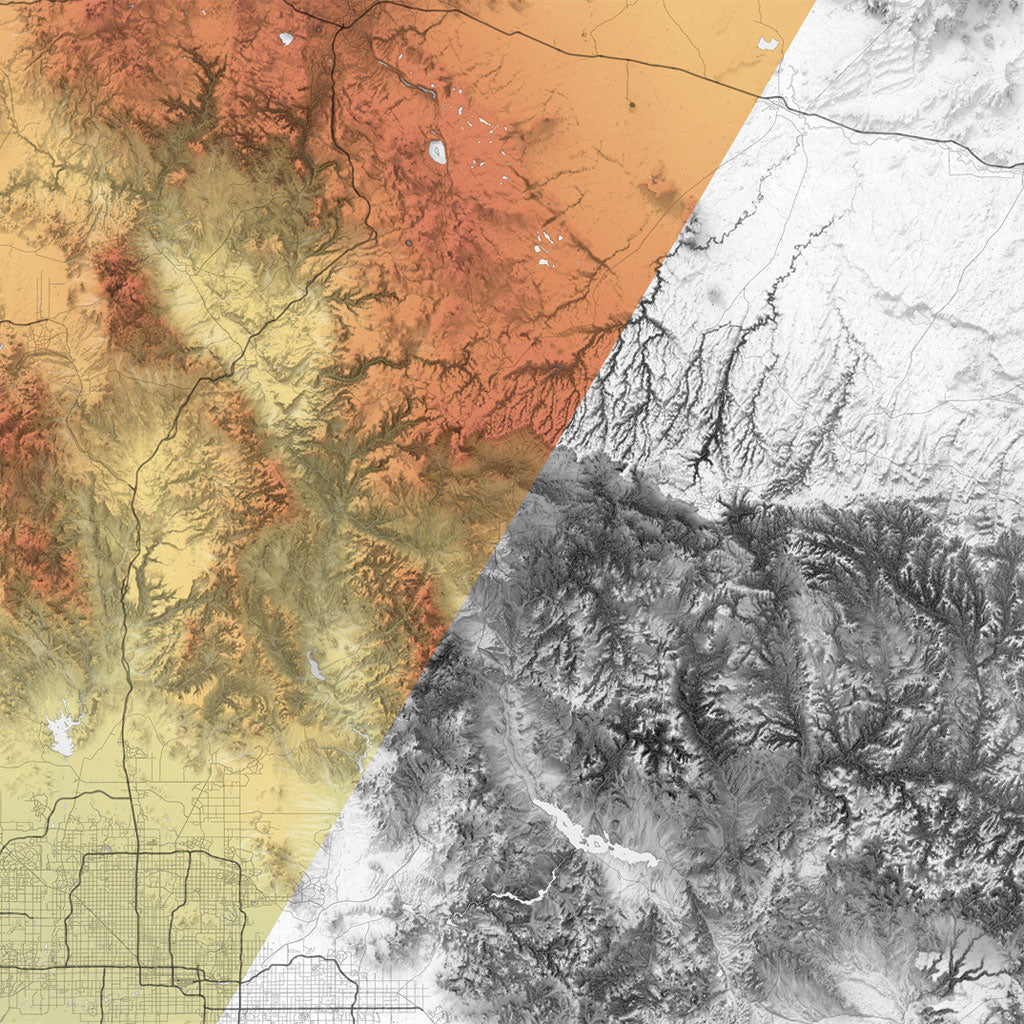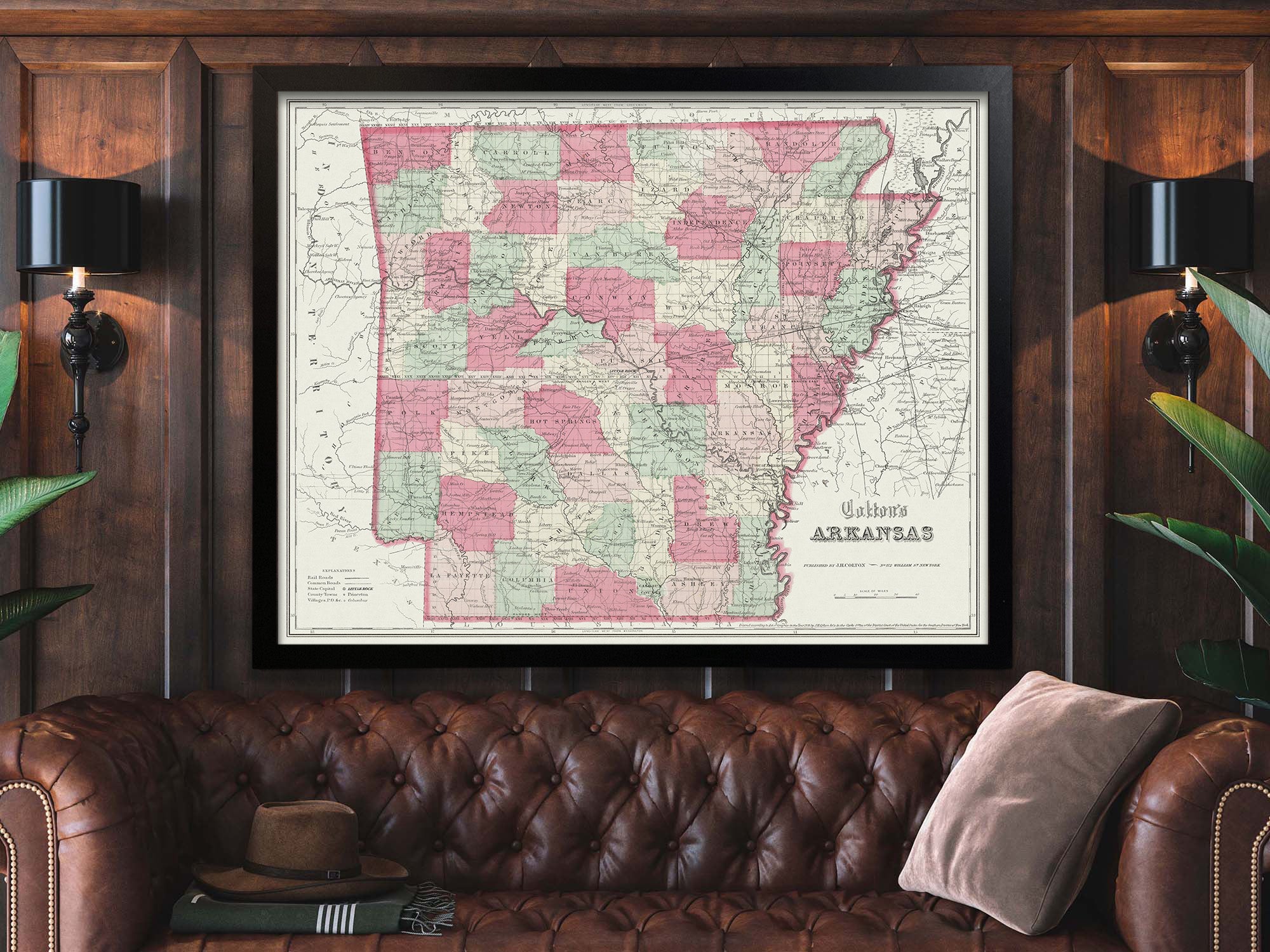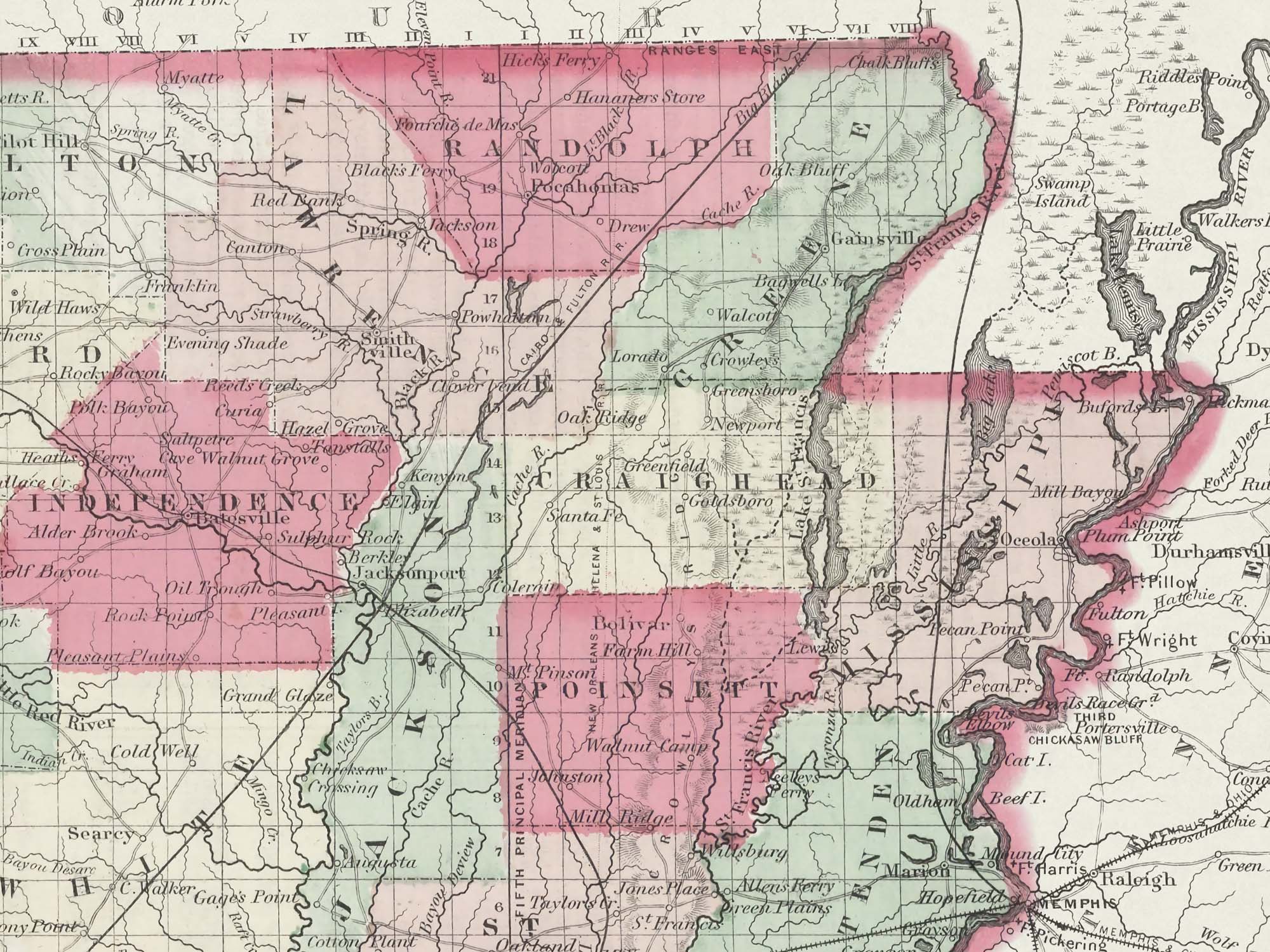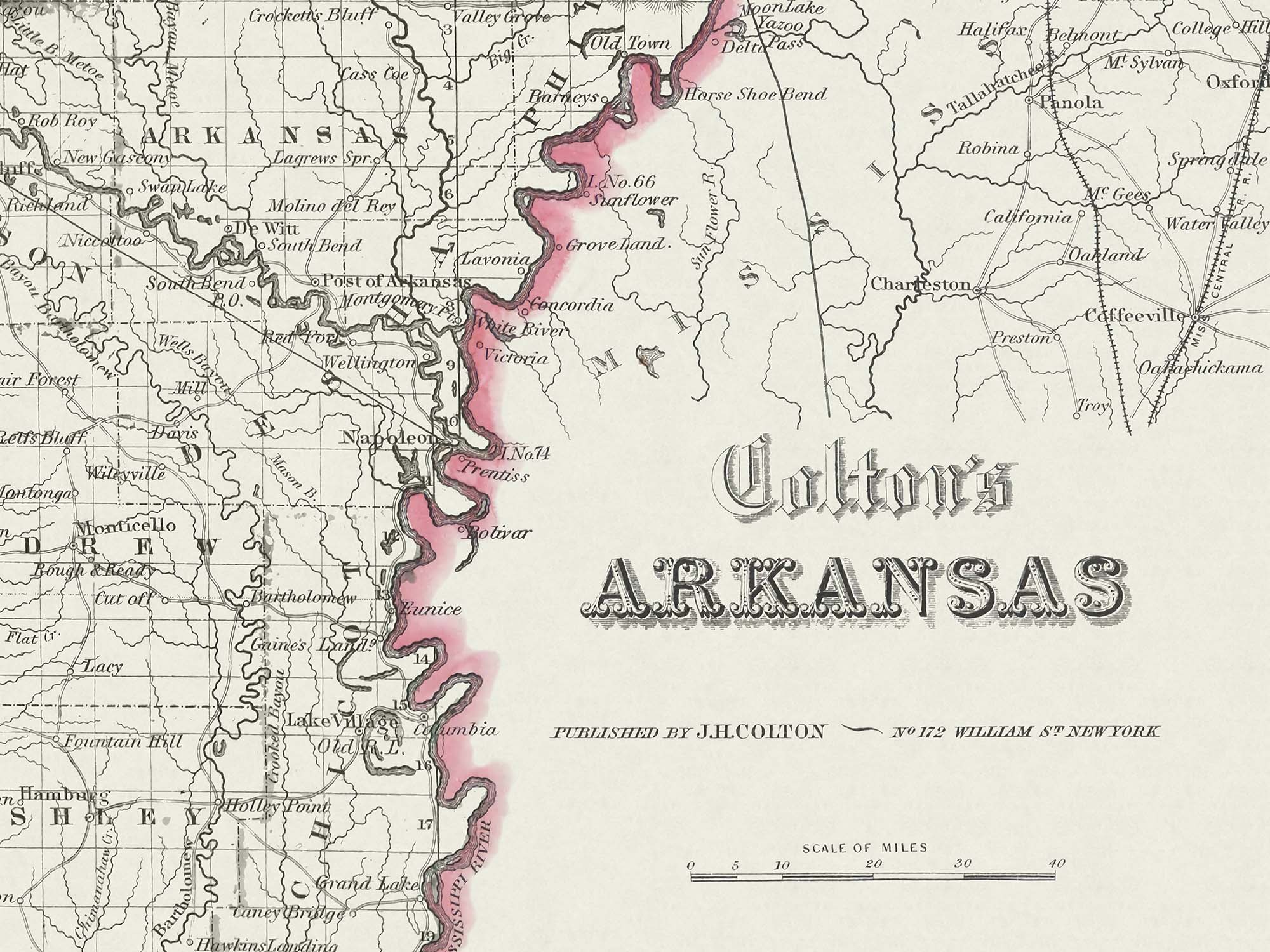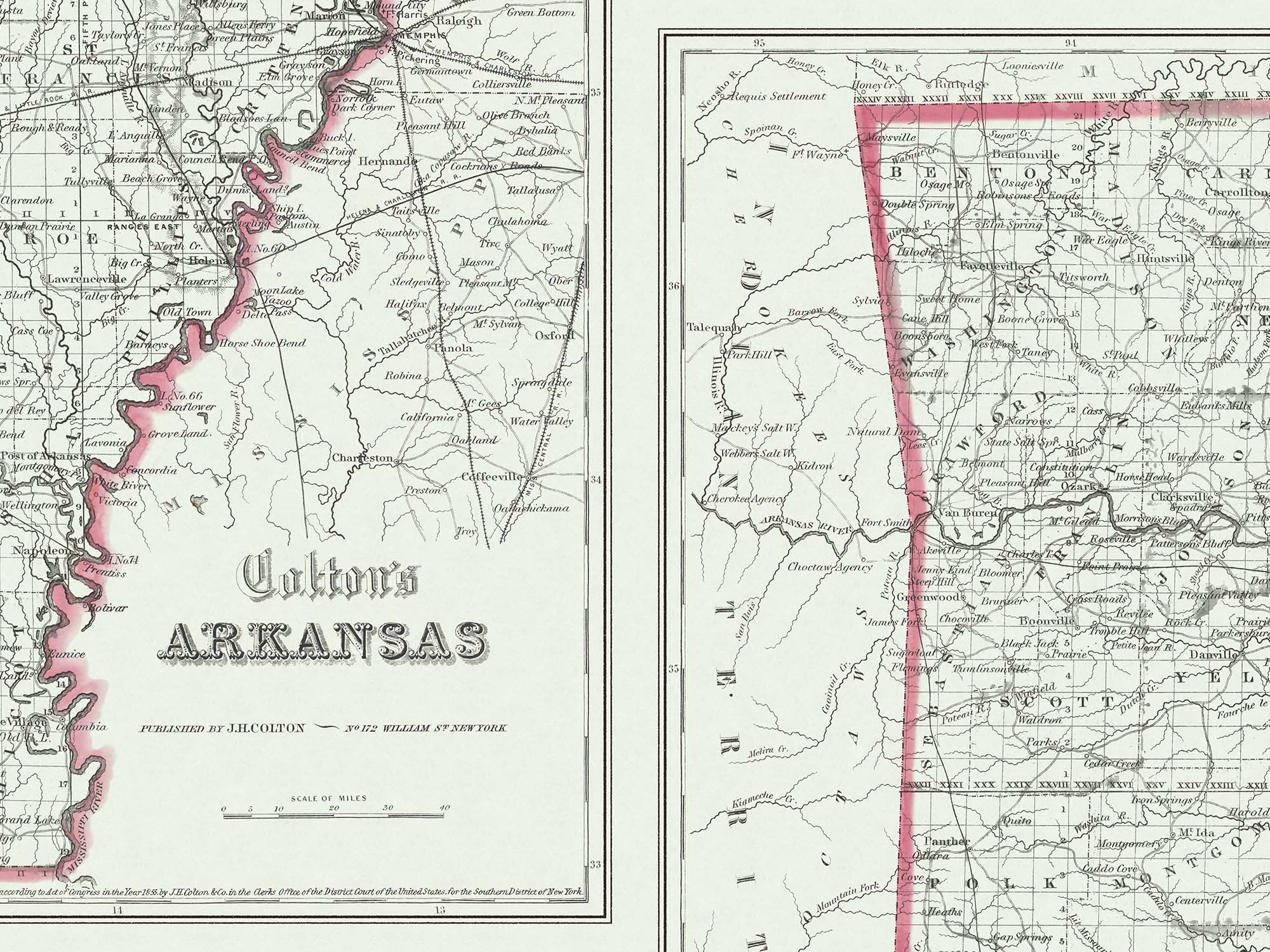This map is a faithful reproduction of the original 1850 map restored to its former glory using the latest digital imaging technology.
Antique Arkansas Map
Standard maps will enter production right away, within the next business day. Larger orders may take more time.
All push pin board maps (framed or canvas wrap) include push pins, are easy to hang, and ship free in the continental US. We'll select the optimal shipping method for fast delivery.
For personalized maps we collaborate closely to guarantee satisfaction. Expect a proof to be sent to you. Your swift responses will facilitate the production and shipping process.
If there are any problems with your map we will take care of you. Returns for all maps are straightforward and hassle-free.
For personalized maps, engaging with the email proofs we send ensures that the final product meets your expectations precisely.
We have 30+ years of cartography experience, meticulously craft each order by hand to ensure excellence, and 100% guarantee your satisfaction. We produce maps that are built to last, with state of the art production and archival quality materials.
Customize with quotes, legends, or dedications using "Personalize Map" options to craft your masterpiece map. Or reach out to us if you don't see the option you want.
We collaborate with you from design to approval of your proof so that you are 100% happy before we print and ship.
Our excellent customer service is always open to you.
Restored 1850's Map
Fine Art Quality
Impressively produced with Archival Inks, Rich Color Depth, and clear and vivid labels. We use premium matte paper.
Expert Craftsmanship
We prepare the map using Fine Art Giclee production techniques. We roll the map in a sturdy tube for shipping to provide a crease-less piece of art.
Vintage State Map of Arkansas
- Description
- Specs & Construction
About the Map: Explore the geographic history of the state of Arkansas in this historic map. This map is part of our vintage USA State Map Collection showing the geography of the states in the 1850-1860s and the time of the Civil War.
The map is a reproduction of the original map meticulously restored to its former glory using the latest digital imaging technology. Using this technology, we carefully restored the colors, torn edges, creases, smeared writings and more. We enhanced features while keeping the original character and design of the map.
Restoration: This map is a faithful reproduction of the original 1850 map restored to its former glory using the latest digital imaging technology.
Geographic Details: This historic map shows many details of towns, roads, railroads, and waterways in the 19th century of the United States.
Shows historic cities such as Little Rock, Bentonville, Fayetteville and more!
Explore the historic boundaries of the cities, counties, and states that have changed over the years. Discover physical changes in the geography - such as former lakes and canals used for transportation and agriculture.
This map is unframed, sold as an art print. Frames are shown for illustration ONLY.
Available Sizes: For an impressive display and maximum readability, choose the largest size available.
Smaller size prints make excellent wall art in groups. Please note that there is no guarantee that small text will be legible in print.
Great Gift For: Interior Design, Teachers, History Buffs, Anniversaries, Birthdays, Friends, Family, and many more!
Production and Shipping Times: The amount of time it takes for your map to arrive depends on where you live and how fast you approve the proof if you’ve ordered a custom map. See Production & Shipping.
Quality and Guarantee: We stand behind our work and guarantee the construction and quality. Contact us if you have any problems with your map and we will coordinate to ensure you are very happy with your purchase.
Materials and Production: This reproduction is printed on Fine Art Museum Quality Paper with giclée inks. The thick paper is archival quality and acid-free with vivid color definition. Paper details:
• 10 mil thick
• 230 gsm weight
• Museum Quality Matte finish
Made in the USA by a USA Small Business and Professional Geographer & Cartographer.
Shipped in a tube and rolled to eliminate creases.
Why choose GeoJango Maps
- We have a lifelong passion for maps, backed by 30+ years of cartography experience and Master's Degrees in Geographic Information Systems (GIS) from Penn State University and Environmental Science from the University of South Florida.
- Our incredible investment into the design of our maps results in unparalleled detail that matters: they will educate you, and grow with you as you travel the world and track your travels—where other maps miss the mark.
- We’ve built the leading map production studio in the USA and use exclusively USA-made materials. Each pin map is proudly crafted by hand, printed by us on the finest materials, mounted on museum-quality Gatorfoam, and carefully framed just for you.
History of the Time
The 1850s in Arkansas were marked by a complex interplay of social, political, and economic factors that reflected the broader trends and tensions of the United States during this period. Situated on the cusp of significant changes, Arkansas experienced developments that ranged from the expansion of slavery and the cotton economy to the growing divisions that would ultimately lead to the Civil War.
One of the most salient aspects of Arkansas during the 1850s was its reliance on slavery and the cotton industry. The state's fertile soil and favorable climate made it ideal for cotton cultivation, and as a result, plantation agriculture thrived. The cotton boom led to an increased demand for enslaved labor, and the institution of slavery became deeply entrenched in the social and economic fabric of Arkansas.
The political landscape in Arkansas during the 1850s was shaped by the debates surrounding the expansion of slavery into new territories. The Compromise of 1850 attempted to strike a balance between the interests of slave and free states, but it also led to further tensions. The passage of the Kansas-Nebraska Act in 1854, which allowed for popular sovereignty in determining the status of slavery in new territories, intensified sectional conflicts and contributed to the emergence of the Republican Party, which opposed the expansion of slavery.
In Arkansas, as in other southern states, there was resistance to the growing anti-slavery sentiment. The state's political leaders defended the institution of slavery and argued for states' rights. Additionally, the Dred Scott v. Sandford Supreme Court decision in 1857 further deepened divisions by ruling that enslaved individuals were property and could not sue for their freedom.
Culturally, the 1850s saw Arkansas grappling with issues of education and infrastructure development. The state established its first public school system in 1853, a significant step toward expanding education opportunities for its residents. Improved transportation, including the construction of railroads, facilitated the movement of goods and people, connecting Arkansas to regional and national markets.
While tensions were escalating across the nation, Arkansas's position on secession and the impending Civil War remained divided. Some parts of the state were more aligned with the Confederacy, while others were more reluctant to secede. The election of Abraham Lincoln as president in 1860 and the subsequent secession of southern states prompted Arkansas to convene a secession convention in 1861, resulting in the state's decision to join the Confederate States of America.
In conclusion, the 1850s in Arkansas were marked by the intertwining forces of slavery, cotton, political divisions, and the impending Civil War. The state's economic reliance on cotton cultivation and slavery, coupled with the broader debates over slavery's expansion, played a significant role in shaping the course of Arkansas's history during this tumultuous period. As the nation moved closer to conflict, the divisions and tensions that emerged in Arkansas would contribute to its ultimate decision to secede and join the Confederacy, a pivotal moment that would forever alter the state's trajectory.









